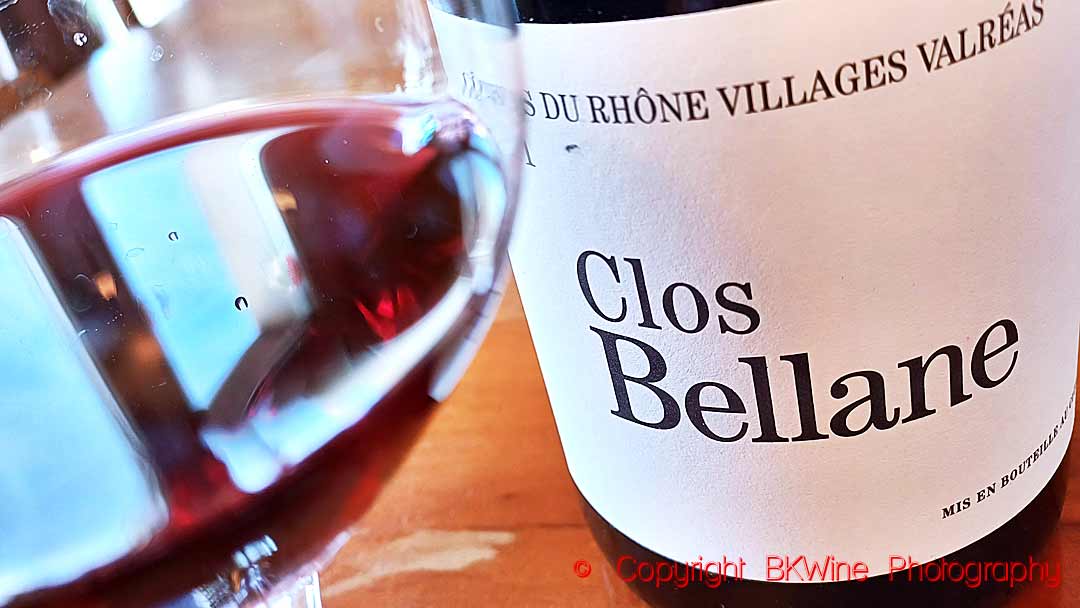We have tasted wines from the northern part of the southern Rhône, namely from the excellent producer Clos Bellane in Côtes du Rhône Villages Valréas. Clos Bellane was launched in Sweden at the end of last year but can be found in several other countries. We have tasted three of the estate’s wines, each showcasing the distinct characteristics we associate with the Southern Rhône Valley in different ways.
The Southern Rhône is one of France’s most attractive wine regions, not just for wine tourists but for all tourists. This is not surprising. Southern Rhône is in the (administrative) region of Provence. You notice it immediately once you drive over the border from the Northern Rhone Valley, approximately at the town of Montelimar. The landscape changes. Here in the south, the vegetation is different, and olive trees appear, as well as Roman remains and picturesque medieval villages.
This is a longer version of an article published on Forbes.com.
Near the northern border is the village of Valréas. Here, we still feel the influence of the Alps in the form of slightly cooler air combined with the Provençal sun and the mistral, the wind that characterises the southern Rhône valley. We are 53 km from Châteauneuf-du-Pape, a reasonable distance south.
Stéphane Vedeau, a third-generation winemaker, has owned the Clos Bellane vineyard outside Valréas since 2010. From the 60-hectare property, you have a magnificent view of Mont de Ventoux and Dentelles de Montmirail. The 48-hectare vineyards are surrounded by forest, which gives them a sheltered location, far from any neighbours.
Valréas has a rich history dating back to the 14th century. It gained prominence when Pope John XXII, the second Pope of Avignon, purchased a property here in 1317. Legend has it that the Pope, upon arriving from Lyon after his election, recovered by drinking the wine of Valréas, leading him to annex the area and later the neighbouring villages of Richerenches and Visan. This area, known as the ‘Enclave of the Popes’, with Valréas as its capital, remained under papal rule until the French Revolution.
Viticulture is not the only crop in the area; in the right season, you can see the amazingly colourful lavender fields. There are apricot orchards and olive groves. For the wine, the red grapes dominate, mainly grenache and syrah. But white wines are also made, often excellent ones, from grenache blanc, marsanne, roussanne, bourboulec, viognier and clairette.
Stéphan’s vineyards have a south-easterly orientation, which means the vines benefit from the milder morning sun (as opposed to the hot afternoon sun), a significant advantage in this climate. Valréas is in the northern part of southern Rhône, and Stéphane’s vines are at an altitude of 400 meters, which is higher than most Valréas vineyards. The grapes ripen a bit slower. He gets good freshness in his wines even in sweltering summers. The property has been organically certified since 2014.
We have tasted three of his red wines, a well-composed trio with clear southern Rhône characters and where the quality rises with each wine.
La Petite Bellane 2020, Clos Bellane, Côtes du Rhône Villages
Just looking at the light and inviting colour gives you a hint of what to expect. It is a delicious wine in a light-drinking style. It is juicy and vibrant, with ripe red fruit, a subtle herbal note, and black cherries on the finish. I would serve it at a cool temperature. The wine is made from 100% syrah grown in clay soil. Ferments with wild yeast and ages for a while in steel tanks (~20 USD).
Clos Bellane 2021, Côtes du Rhône Villages Valréas
This wine is also light in colour, but we feel more structure here: ripe fruit, red berries, some figs, and ripe cherries. We feel the warmth of the southern Rhône but with refreshing notes of Provencal herbs. This is an excellent wine with good complexity. The grapes are 50% syrah and 50% grenache from clay/limestone soil. Slow fermentation during one month and ageing in concrete tanks and old oak barrels (~25 USD).
Les Echalas 2020, Clos Bellane, Côtes du Rhône Villages Valréas
Les Echalas is made with the estate’s oldest syrah in clay/limestone soil and a small portion of grenache. Here, the colour is deeper and darker. It has an intense aroma of dark, ripe berries. The taste is rich and generous and reflects the warm climate. It has notes of fig, cherry, and chocolate and a soft but well-structured finish. It is an ambitious wine that gives you a superb drinking experience. Fermented with traditional pigeage (punching down the skin cap) at 28 to 30 degrees C. The extended skin contact lasts for eight weeks. The wine ages in small oak barrels, 1–3 years old (~30 USD).
Clos Bellane also makes white wines and owns a small vineyard in Chateauneuf-du-Pape.















